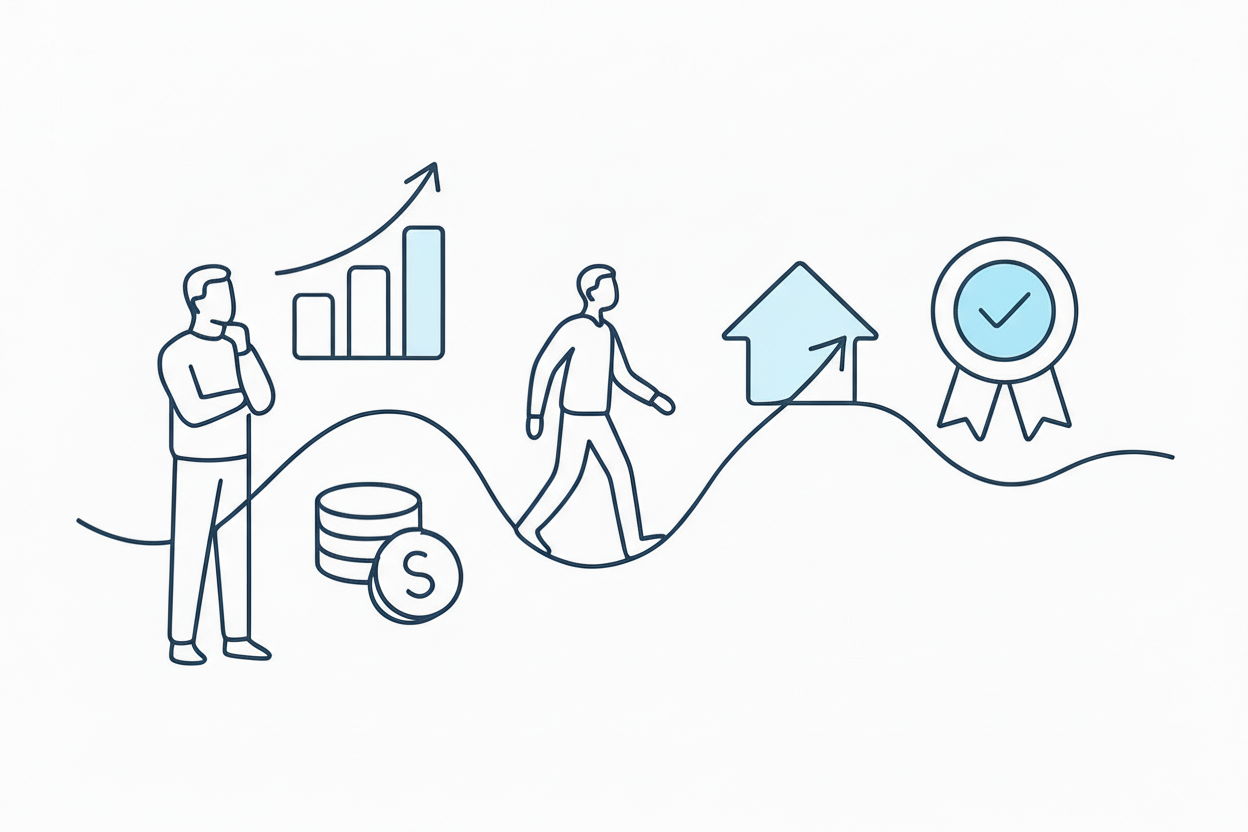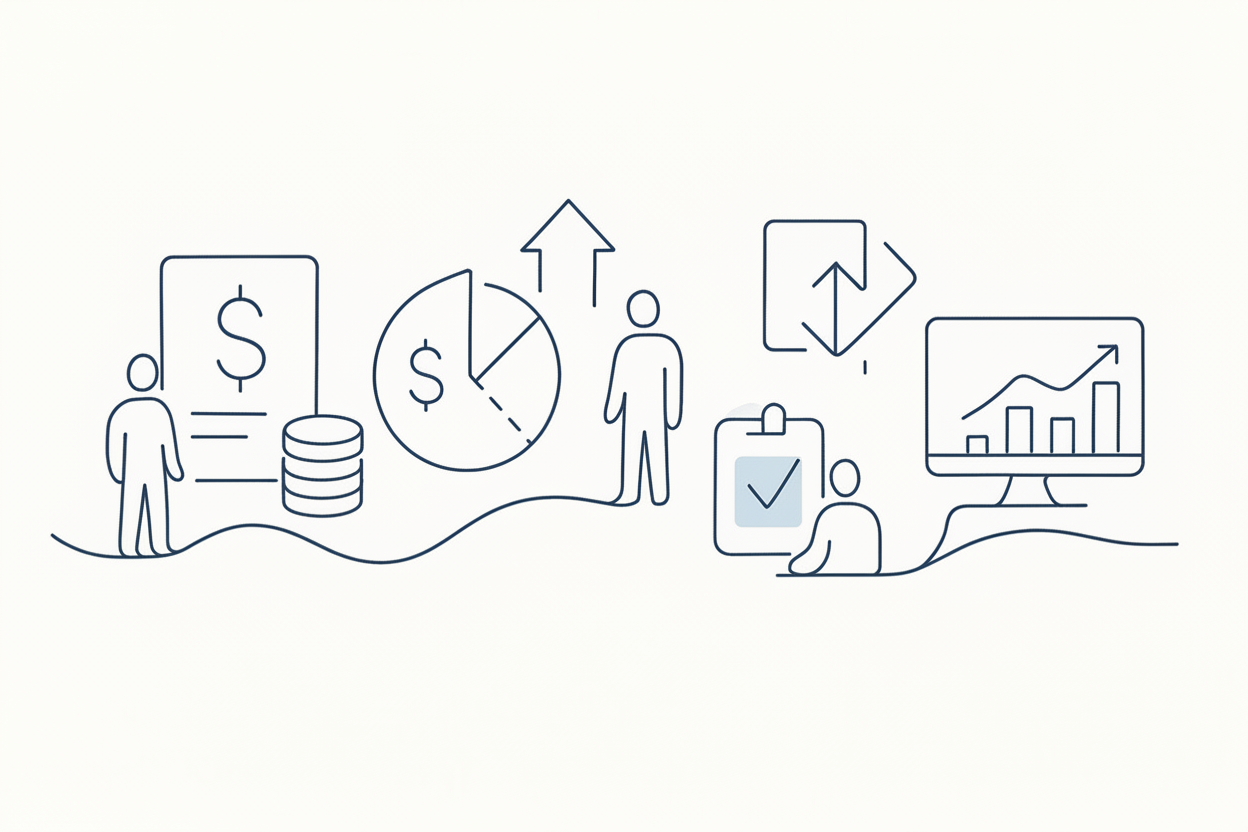How to Pass BluSky Evaluation

Proven strategies and tips to pass BluSky.pro's evaluation process with a 16.9% pass rate, including risk management and trading psychology.
Passing the BluSky.pro evaluation is challenging, with only 16.9% of traders succeeding. However, with proper preparation, disciplined risk management, and understanding of the evaluation structure, you can significantly increase your chances of joining the funded trader ranks. This guide provides actionable strategies from successful BluSky traders who've passed the evaluation and maintained funded accounts.
Understanding the Evaluation Structure
Three-Phase Process
- Evaluation Account: Learn platform and basic rules (8+ days)
- BluLive Account: Trade with real-time data in simulation (8+ days)
- Funded Account: Trade with real capital
Minimum 8 trading days to pass evaluation, then progression to BluLive and funded status.
Profit Targets by Account Size
- $25,000: $1,500 profit target
- $50,000: $3,000 profit target
- $100,000: $6,000 profit target
- $150,000-$300,000: Scaled targets
Risk Limits to Respect
- Max Daily Loss: $600-$2,000 depending on account size
- Trailing or Static Drawdown: $1,200-varies
- Consistency Rule: 30% threshold (no penalty for large wins)
Core Strategies for Success
1. Master Risk Management First
Before focusing on profits, nail these risk fundamentals:
- Never risk more than 1-2% per trade
- Set stop losses on every position immediately
- Calculate position size based on stop distance
- Track daily P&L to avoid hitting limits
- Plan max trades per day to prevent overtrading
2. Start Small and Build Confidence
Many traders fail by trading too aggressively early:
- Begin with minimum contract sizes (Micro futures)
- Focus on consistency over home runs
- Gradually increase size as confidence grows
- Celebrate small wins
- Don't chase losses with bigger positions
3. Trade Your Tested Strategy
Don't experiment during evaluation:
- Use only strategies you've backtested thoroughly
- Stick to familiar instruments and timeframes
- No trying new indicators or systems
- Keep trading plan simple and repeatable
- Document your edge clearly
4. Focus on High-Probability Setups
Quality over quantity always wins:
- Wait for A+ setups only
- Skip mediocre opportunities
- Better to undertrade than overtrade
- Patience is your competitive advantage
- Remember: You don't need to trade every day
Day-by-Day Evaluation Playbook
Days 1-3: Foundation Phase
- Trade ultra-conservatively
- Get comfortable with platform
- Verify all settings correct
- Test order entry/exit
- Build psychological confidence
- Target: Break even or small profit
Days 4-10: Building Phase
- Increase position size slightly
- Execute your core strategy
- Focus on process over profits
- Track performance metrics
- Target: 30-50% of profit goal
Days 11-20: Acceleration Phase
- Maintain discipline (most fail here)
- Don't force trades to meet targets
- Let profits run on winners
- Cut losses quickly
- Target: 70-80% of profit goal
Days 21-24+: Completion Phase
- Conservative approach to protect gains
- Avoid unnecessary risks near finish
- Lock in profits if close to target
- Don't get greedy
- Target: Hit profit goal, advance to next phase
Common Mistakes That Cause Failure
1. Revenge Trading
After a loss, traders often:
- Double position size to "get it back"
- Take impulsive trades
- Ignore strategy rules
- Hit daily loss limit
Solution: Step away after any loss exceeding 1% of account. Come back next day with clear mind.
2. Overtrading
Traders make too many trades because:
- Boredom and impatience
- Feeling pressure to hit targets fast
- FOMO on every market move
- Death by a thousand cuts
Solution: Set maximum trade limit per day (3-5 trades max). Quality beats quantity.
3. Ignoring Stop Losses
Hope and prayer instead of risk management:
- "It will come back"
- Moving stop loss farther away
- No stop loss at all
- Letting small loss become account killer
Solution: Set stop loss immediately when entering trade. Never move it against you.
4. Trading During Unfamiliar Conditions
- News events you're not prepared for
- Overnight holding without plan
- Instruments you don't understand
- Timeframes outside your comfort zone
Solution: Stick to what you know. Skip trades when uncertain.
Instrument Selection
Best Futures for BluSky Evaluation
Micro E-Mini S&P 500 (MES)
- Pros: Smaller size, liquid, predictable
- Cons: Lower profit per tick
- Best for: Beginners, conservative traders
Micro E-Mini Nasdaq (MNQ)
- Pros: More volatility, faster profits possible
- Cons: Larger intraday swings
- Best for: Experienced day traders
Crude Oil (CL) or Micro Crude (MCL)
- Pros: Excellent volatility, clear patterns
- Cons: Can gap aggressively
- Best for: Intermediate to advanced
Gold (GC) or Micro Gold (MGC)
- Pros: Trending instrument, good liquidity
- Cons: Overnight gaps
- Best for: Swing traders
Recommendation: Start with MES or MNQ for predictability.
Trading Psychology Tips
Manage Evaluation Pressure
The psychological weight of evaluation causes many failures:
- Treat evaluation as learning experience, not life-or-death
- Remember $49-$320 is tuition, not wasted money
- Failed attempt teaches what works/doesn't
- Many successful traders failed multiple times
- Pressure creates mistakes
Build a Pre-Trade Routine
Consistency comes from routine:
- Review market conditions (trend, volatility, news)
- Identify high-probability setups
- Calculate position size and stop loss
- Visualize trade execution
- Set alerts or orders
- Wait patiently
Post-Trade Analysis
After every trade:
- Journal entry: What worked/didn't
- Screenshot the setup
- Calculate actual vs expected profit/loss
- Identify lessons learned
- Adjust if needed (but don't abandon strategy)
Time Management Strategies
Best Trading Times
Focus on high-liquidity periods:
- 9:30-11:00 AM EST: Market open volatility (ES, NQ)
- 2:00-4:00 PM EST: Afternoon session
- 8:00-10:00 PM EST: Asian session (currencies)
Avoid low-liquidity periods where slippage increases.
How Much Time Needed?
Realistic time commitments:
- Active day trading: 2-4 hours daily
- Swing trading: 30 minutes daily + monitoring
- Automated strategies: 1 hour daily monitoring
You need 8 trading days minimum per phase, but can spread over calendar month.
Tracking Progress
Essential Metrics to Monitor
- Win rate (target: 50%+)
- Average winner vs average loser (aim for 1.5:1+)
- Largest loss (should never exceed 2% account)
- Consecutive losses (if 3+, stop trading that day)
- Daily P&L (stay well below max daily loss)
- Days traded (minimum 8 before advancing)
Use a Trading Journal
Document every trade:
- Date and time
- Instrument and direction
- Entry and exit prices
- Profit/loss
- Why you took trade
- What you learned
Advanced Tips from Successful Traders
Scale Out of Winners
Instead of all-or-nothing:
- Take 50% profit at 1:1 risk/reward
- Move stop to breakeven
- Let remaining 50% run to larger target
- Reduces stress, locks in profits
Use Time Stops
If trade not working after X time, exit:
- Day trades: Exit if no movement in 15-30 minutes
- Swing trades: Exit if thesis invalid after 2-3 days
- Prevents capital being tied up in dead positions
Trade Smaller During Drawdowns
If you're down on the day/week:
- Reduce position size by 50%
- Take only best setups
- Focus on rebuilding confidence
- Don't try to recover quickly
Know When to Walk Away
Sometimes best trade is no trade:
- If you're emotional
- After big win (lock it in, celebrate)
- After hitting 50% daily loss limit
- When market conditions unclear
Platform-Specific Advice
Using NinjaTrader
- Set up ATM strategies for automatic exits
- Use chart trader for quick execution
- Configure alerts for setups
- Practice order entry until automatic
Using TradingView
- Connect via Tradovate properly
- Test connection with tiny position first
- Use hotkeys for faster execution
- Set up template with key indicators
Using Tradovate Directly
- Simplest interface, fastest execution
- DOM (Depth of Market) trading
- One-click order entry
- Best for scalping and quick trades
Handling Specific Scenarios
What If You're Near Daily Loss Limit?
- Stop trading immediately if at 75% of limit
- Don't try "one more trade" to recover
- Accept the small loss, come back tomorrow
- Preserving capital > trying to win
What If You Hit Profit Target Early?
- Consider stopping for the day
- If continuing, reduce size dramatically
- Lock in gains, don't give them back
- Remember: Passing evaluation is goal, not max profit
What If You Fail a Phase?
- Review every trade to find patterns
- Identify your main mistake (overtrading? No stops?)
- Decide: Reset ($85) or start fresh
- Take time off to process lessons
- Come back with clear plan
The 16.9% Pass Rate Reality
Why So Many Fail
- Lack of trading plan
- Poor risk management
- Overtrading and impatience
- Revenge trading after losses
- Unrealistic expectations
- Insufficient preparation
What Successful Traders Do Differently
- Have proven strategy before starting
- Trade conservatively throughout
- Never violate risk rules
- Treat it like real money
- Focus on process, not profits
- Patient and disciplined
You can be in the 16.9% by following the strategies in this guide.
Conclusion
Passing the BluSky.pro evaluation requires more than trading skills—it demands discipline, patience, and psychological resilience. The 16.9% pass rate reflects the challenge, but with proper preparation, risk management, and execution of your tested strategy, you can join the ranks of funded traders.
Key takeaways:
- Risk management is more important than profit
- Trade conservatively, especially early
- Quality over quantity in trade selection
- Follow your plan without deviation
- Learn from every trade
- Patience and discipline separate winners from losers
Remember: Most successful BluSky traders didn't pass on their first attempt. Each failure is tuition paid toward your trading education. Study your mistakes, adjust your approach, and try again with newfound knowledge.
Ready to start your evaluation with these strategies? Visit BluSky.pro and apply these proven techniques to maximize your chances of success.




